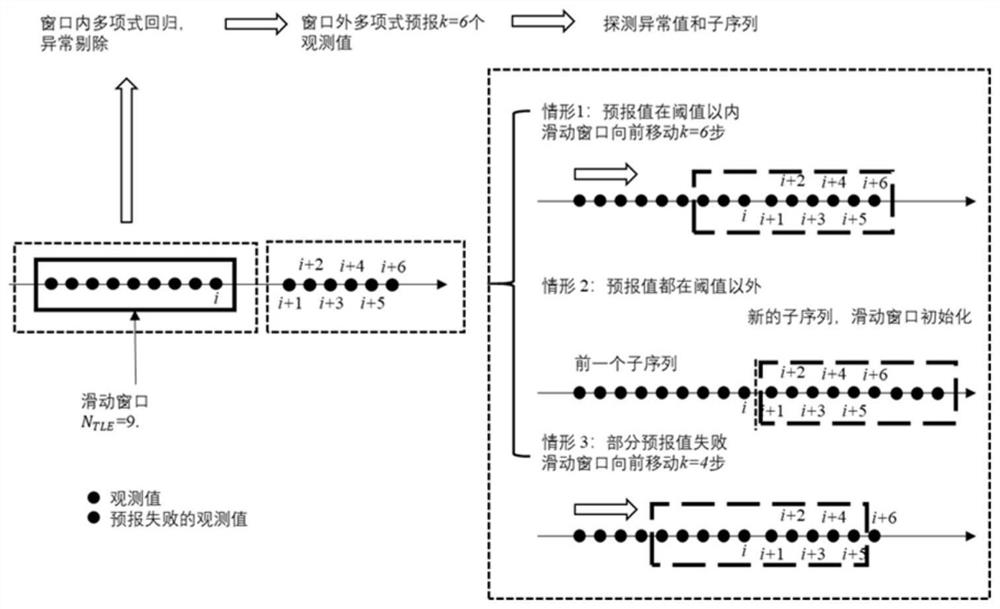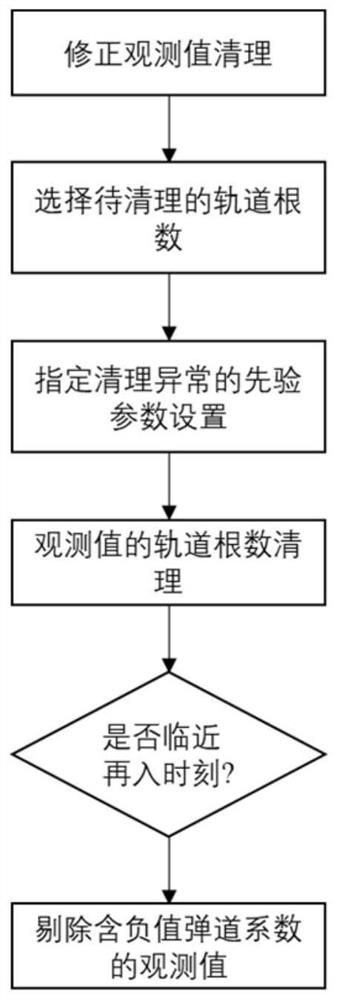Anomaly Cleaning Method of Orbital Parameters Based on Expectation Maximization Estimation
A technology of orbital parameters and cleaning methods, which is applied in the field of orbital parameter anomaly cleaning, and can solve the problems of data "islands, inconsistencies, sparse orbital parameters, etc.
- Summary
- Abstract
- Description
- Claims
- Application Information
AI Technical Summary
Problems solved by technology
Method used
Image
Examples
no. 1 Embodiment
[0077] Based on TLE data in the US NORAD catalog database, the threshold settings in the target 13025 time sequence, the threshold setting and window threshold settings in the window are set in the three combinations on an abnormal cleaning: Strategy 1: Window threshold 3 times standard deviation 3 times the three-fold standard deviation of the window; Strategy 2: window threshold is 2 times the standard deviation, the window threshold is 3 times the standard deviation; the Strategy 3: window threshold is 2 times the standard deviation, the window threshold is 2 times the standard deviation.
[0078] Take the target of the track tilt angle to clean up as an example, discuss the impact of the three strategies:
[0079] Step 1: Download the target 13025 All data, time from January 9, 1982 to November 20, 1988;
[0080] Step 2: Read the data, specify the correction observation threshold 0.5 rail cycles, and clean up;
[0081] Step 3: Set the number of observations within the sliding ...
no. 2 Embodiment
[0092] TLE data in the US NORAD cataloging database Threshold setting and window threshold setting three combinations: Strategy 1: Window threshold 3 times standard deviation, 3 times the window threshold; Strategy 2: window threshold 2 times standard deviation, window threshold 3 times standard deviation; Strategy3 : The window threshold is 2 times the standard deviation, and the window threshold is 2 times the standard deviation.
[0093] The NORAD number of satellite Jason-2 is 33105, and the time to be processed is January 1, 2019 January 11, 2021. After the correction observation is cleaned, the remaining 1820 observations are restored. Taking the track tilt as an example, the combined strategy cleaning results Figure 7 . The order of the polynomial is set to 3, and the number of forecast values is 8. The track parameters are now introduced as follows:
[0094] Step 1: Combined strategy: n TLE = 200 and Strategy1, clean up 17 exceptions, see Figure 7 (A).
[0095] Step 2: C...
no. 3 Embodiment
[0108] 根据Lidtke等(Lidtke,A.A.,Gondelach,D.J.,&Armellin,R.Optimisingfiltering of two-line element sets to increase re-entry prediction accuracyfor GTO objects[J].Advances in Space Research,2018:1289-1317.)的研究Results, select the rocket target 14287 as a comparison of the cleaning algorithm. Figure 8 The cleaning effect of two algorithms is given. The graph is the cleaning effect of the present application algorithm. In the dotted line box, the box is the abnormality of the new algorithm decision; the effect of the right LIDTKE is clear, there is a significant exception. Therefore, the algorithm proposed by LIDTKE et al. Is unreasonable for some abnormal determination, and there is a lot of abnormalities.
PUM
 Login to View More
Login to View More Abstract
Description
Claims
Application Information
 Login to View More
Login to View More - R&D
- Intellectual Property
- Life Sciences
- Materials
- Tech Scout
- Unparalleled Data Quality
- Higher Quality Content
- 60% Fewer Hallucinations
Browse by: Latest US Patents, China's latest patents, Technical Efficacy Thesaurus, Application Domain, Technology Topic, Popular Technical Reports.
© 2025 PatSnap. All rights reserved.Legal|Privacy policy|Modern Slavery Act Transparency Statement|Sitemap|About US| Contact US: help@patsnap.com



